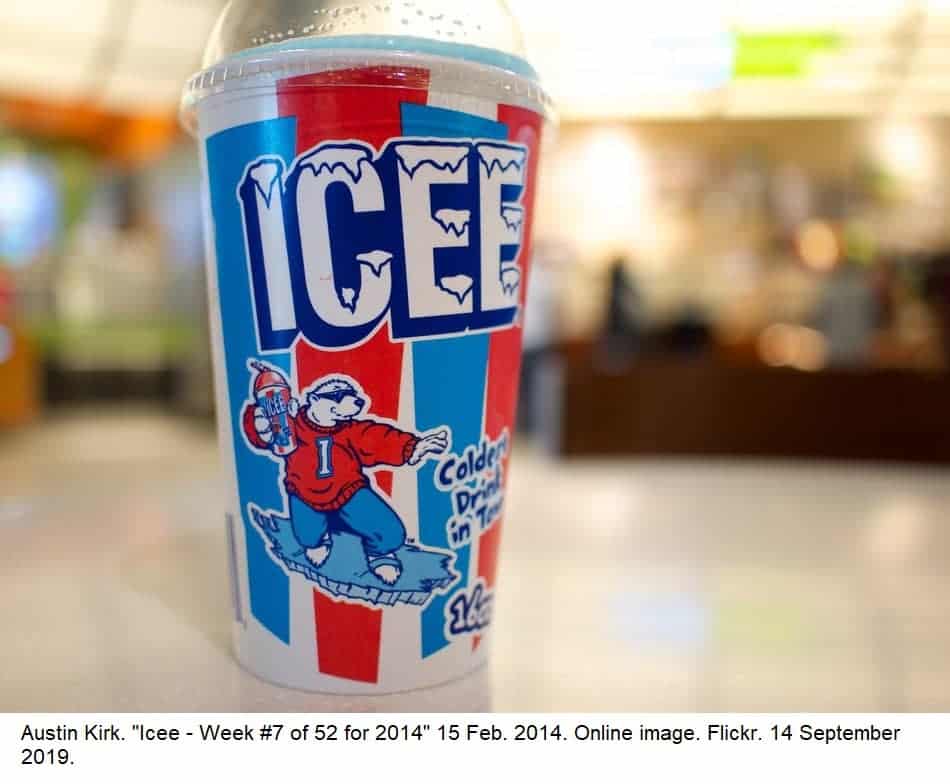An Icee, stylized as ICEE, is a popular variety of frozen carbonated beverage put out by the Icee Company located in the US and Ontario. The company offers a number of products, but the ICEE is the main one.
The product has been around for decades.1 Because it’s been around for so long, a lot of vegans grew up drinking the cold treat and want to know if they have to give it up after switching to an animal-free diet.
Is it vegan? Yes, Icee products are vegan. They have a number of flavors on offer, and all are some combination of high-fructose corn syrup, citric acid, cruelty-free preservatives, and vegan-friendly artificial flavors and colors.
However, I would be wary of the Orange and Cream flavor.2 They don’t list milk as an ingredient, but there’s scant allergen info on the site, and the nutritional info isn’t structured in the normal food label format. So, just to be sure I’d stay away from that flavor.
What we’ll do here is go over the various ingredients for each flavor and why they’re considered to be suitable for vegan consumption.
Why ICEEs Are Considered Vegan
You can’t go wrong with ice and carbonated water. Then we have the fruit and soda flavors to consider, which we’ll get into with the specific flavors currently available.
Cola
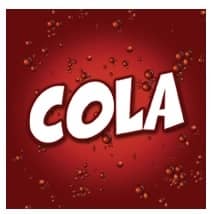
This is probably the most popular version. It contains HFCS, water, quillaia and yucca extracts, citric acid, sodium benzoate, artificial flavor, and red 40.3
Red 40 may have caught your attention. Also known as Allura Red, it is a common food coloring agent and you’ll encounter it in most colorful sodas, candies, popsicles, and children’s medicine.
It is not to be confused with another common red food colorant known as Red 4 aka carmine. Unlike Red 40, which is petroleum-derived (and thus vegan), Red 4 is produced from bugs.4-6
Since they share a common name and are slightly different shades of the same color, the two additives often get confused with one another.
Banana
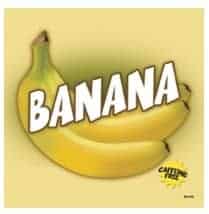
This one contains water, HFCS and/or sucrose (table sugar), artificial flavors, yucca extract, citric acid, quillaia, sodium benzoate (for taste), and yellow’s 5 and 6.7
Yellow 5, or Tartrazine (E102), is a lemon-yellow food coloring. Like Red 40, it’s also a type of azo dye.
It, like most azo dyes, was first manufactured with coal tar, and these days it tends to be produced as a by-product of the petroleum industry. Thus, it’s not animal-derived and perfectly suitable for vegans.
A lot of these food dyes are somewhat controversial in terms of health.
For example, Yellow 5 has been found to interact with estrogen receptors. It’s also thought to bind with human and bovine serum albumin forming a complex that can interfere with some physiological functions.8
It’s even restricted in some countries due to being linked with asthma, skin rashes, hyperactivity, and migraines.9,10
Here in the US, it is recognized as safe in limited amounts.
The same goes for Yellow 6, or Sunset Yellow, another petroleum-derived food dye.11,12
I only bring this up because some vegans are primarily concerned with health. But, Yellow’s 5 and 6 are 100% vegan-friendly.
Blue Raspberry
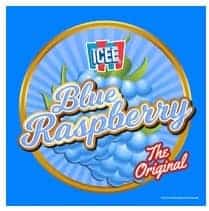
Ingredients for this one include water, HFCS, citric acid, yucca and quillaja extracts, potassium sorbate and sodium benzoate (preservatives), Blue #1, and artificial Flavor.13
Blue 1 aka Brilliant Blue FCF is a synthetic organic compound used as a blue colorant in dietary supplements, processed foods, medications, and cosmetics.14
It’s a bright and vibrant blue, so it’s a favorite for use blue raspberry flavored products.
This color is synthesized chemically and isn’t animal-derived.15
Grape
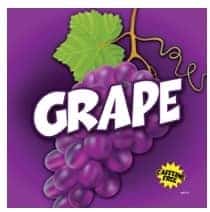
This one contains HFCS, water, artificial flavors, quillaia and yucca extracts, citric acid and sodium benzoate, Red 40 and Blue 1.16
So, this one checks out.
Orange
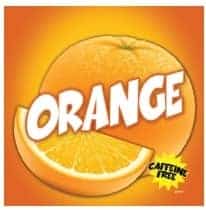
This one contains water, HFCS, citric acid, natural flavors, yucca and quillaia extracts, sodium benzoate, and Yellow #6.17
No problems here.
Red Cherry
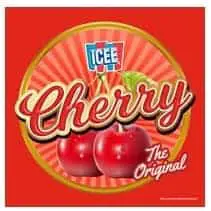
This one contains the usual ingredients and red 40 as the main food colorant.18
No problems here.
Green Apple
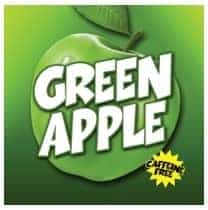
This one contains the usual ingredients, but throws in green 3.19
Green 3 aka Fast Green is a fairly common food dye that you’ll run across from time to time.
It’s synthesized in the same way as Blue 1, so it’s also 100% vegan.20
Coca Cola Flavors
These aren’t listed on the website, but most 711 type convenient stores serve Coca Cola versions of the ICEE. Regular Coke and Dr. Pepper are pretty common.
The basic Coca Cola flavors sold in North America are all vegan-friendly.
Some Coca Cola UK flavors beta carotene with fish gelatin. Beta carotene, a plant-based pre-formed version of vitamin A, is often stabilized with animal products such as fish gelatin.
The Vegetarian Resource Group reached out to the Coca Cola company to ask which products contain the stuff and were told that only Kia-Ora Orange Squash, Kia-Ora Orange Squash No Added Sugar, Lilt, Lilt Zero, and Schweppes Orange Squash contained the additive.21
I’m not sure if Icees are sold in the UK, but if they are you’ll need to avoid these flavors.
Also, the regular non-Coca Cola soda flavors don’t use fish gelatin (the ones listed above). I bring this up because, at least in the states in the US, coke is often just a synonym for soda in general.
For this reason, a lot of folks assume that because some Coca Cola products contain fish gelatin, then the ingredient must be widespread in soda products in general. To my knowledge the additive is only in certain Coca Cola products sold in the UK.
Anyway, you can rest assured that the above flavors do not contain any gelatin. Not even the orange flavor contains beta carotene, which is an orange pigment.
Other Flavors
There’s so much overlap with the ingredients, so I’ll just close by saying that the remaining flavors also check out as vegan.
These include:
- Boysenberry
- Cherry Lime
- Lemon
- Lemon Lime
- Pina Colada
- Pink Lemonade
- Raspberry Lemonade
- Strawberry
- Strawberry Kiwi
- Watermelon
- White Cherry
That’s it for the vegan status of Icee drinks. Thanks for reading.
You may also want to check out the following related articles:
References
- The Brain-freezing Science Of the Slurpee. Maya Wei-Haas – https://www.smithsonianmag.com/innovation/brain-freezing-science-slurpee-180959750/
- Icee, Orange Cream. https://www.icee.com/products/#11
- Icee, Cola. https://www.icee.com/products/#5
- Carminic Acid https://en.wikipedia.org/wiki/Carminic_acid
- Carmine https://en.wikipedia.org/wiki/Carmine#Production
- Bug-Based Food Dye Should Be Exterminated, Says CSPI. https://cspinet.org/news/bug-based-food-dye-should-be-exterminated-says-cspi-20060501
- Icee, Banana. https://www.icee.com/products/#1
- Natural and Artificial Flavoring Agents and Food Dyes Alexandru Grumezescu-Alina Holban – Academic Press, an Imprint Of Elsevier – 2018
- Berzas, J.J., Flores, J.R., Llerena, M.J.V., Farinas, N.R., 1999. Spectrophotometric resolution of ternary mixtures of tartrazine, patent blue V, and indigo carmine in commercial products. Analy. Chim. Acta. 391 (3), 353–364.
- Kapadia, G.J., Tokuda, H., Sridhar, R., Balasubramanian, V., Takayasu, J., Bu, P., Enjo, F., Takasaki, M., Konoshima, T., Nishino, H., 1998. Cancer chemopreventive activity of synthetic colorants used in foods, pharmaceuticals, and cosmetic preparations. Cancer Lett. 129 (1), 87–95.
- Committee on Food Chemicals Codex (2003). Food chemicals codex (5th ed.). Washington, DC: National Academy Press. ISBN 9780309088664.
- Diet and Nutrition: The Artificial Food Dye Blues. Carol Potera. Environ Health Perspect. 2010 Oct; 118(10): A428. https://www.ncbi.nlm.nih.gov/pmc/articles/PMC2957945/
- Icee, Blue Raspberry. https://www.icee.com/products/#20
- Brilliant Blue FCF. https://iacmcolor.org/color-profile/brilliant-blue-fcf-fdc-blue-no-1/
- El Ali, Bassam M.; Bassam El Ali; Ali, Mohammad Farahat (2005). Handbook of industrial chemistry: organic chemicals. New York: McGraw-Hill. ISBN 978-0-07-141037-3.
- Icee, Grape. https://www.icee.com/products/#6
- Icee, Orange. https://www.icee.com/products/#10
- Icee, Cherry. https://www.icee.com/products/#3
- Icee, Green Apple. https://www.icee.com/products/#7
- Kirk, R.E. and D.F. Othmer. 1962. Encyclopedia of Chemical Technology. Interscience. Publishers, New York.
- The Vegetarian Resource Group Blog. https://www.vrg.org/blog/2012/02/15/beta-carotene-in-us-beverages-not-stabilized-with-gelatin-unlike-some-products-in-the-uk/

